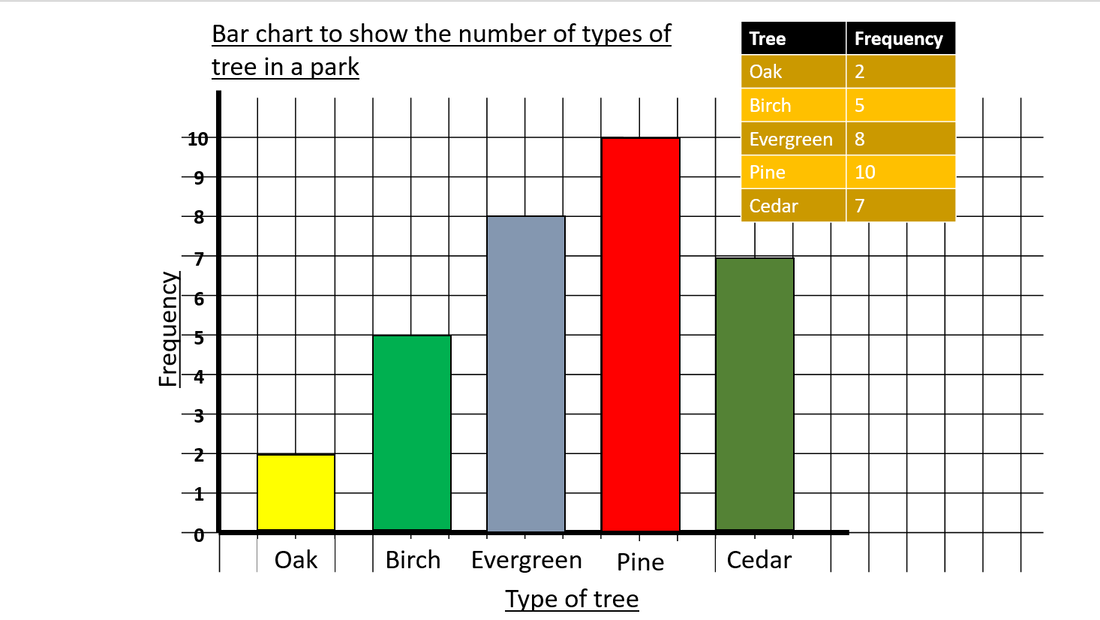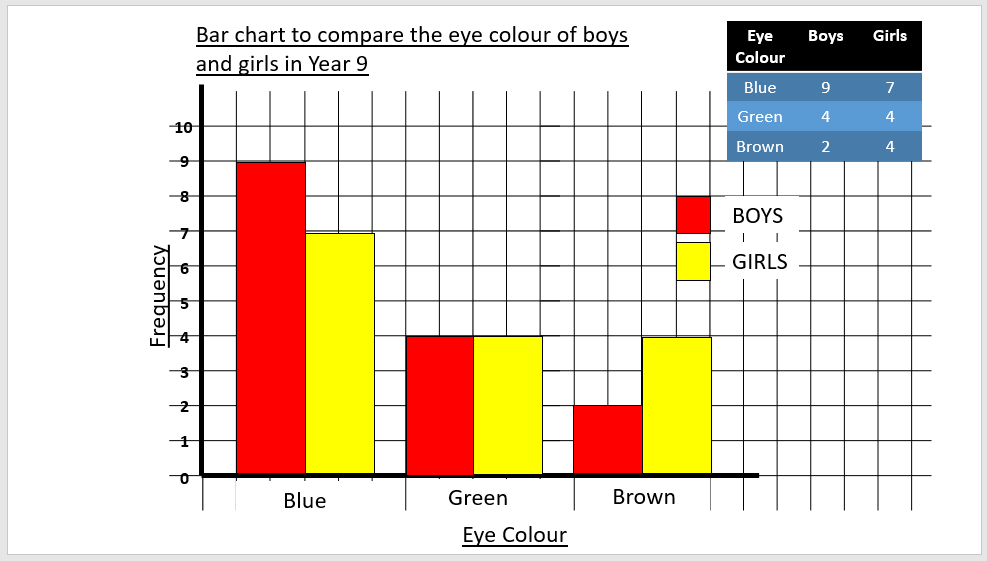What is a bar chart?
|
A bar chart is a chart to display data, usually as bars. A bar chart is one of the most common types of charts and is similar to a column chart. A bar chart must always have a title, frequency on the y-axis, gaps between the bars, bars with equal widths, and labelled axes.
The image to the right shows a bar chart which visibly has a title, frequency on the y-axis, gaps between the bars, all bars are equal widths and both axes are labelled. You can also see the frequency data that goes along with the bar chart and gives it its data. Usually in an exam, you'll be asked to work out the frequencies of different things so you can then plot them on a graph or chart. Don't worry, on this page, we are going to cover everything you need to know about bar charts. |



